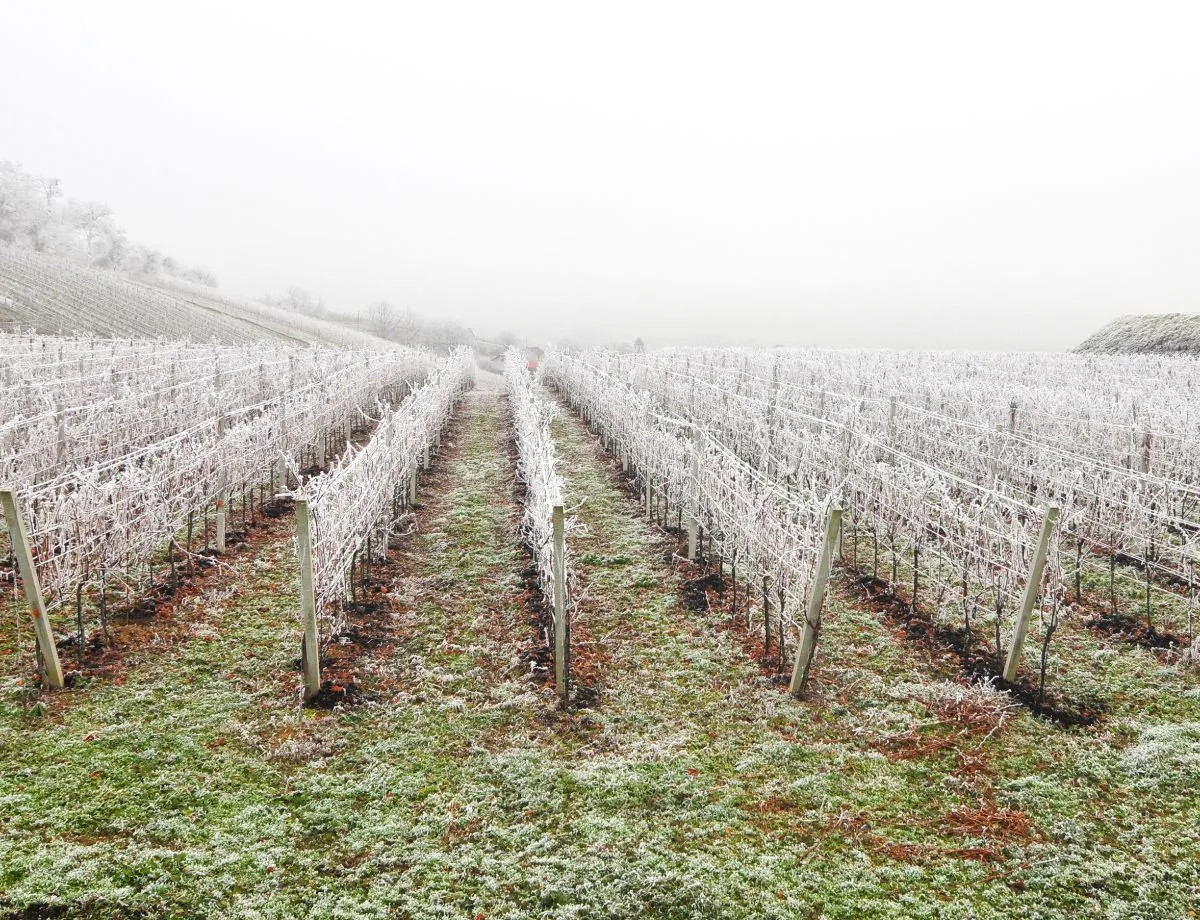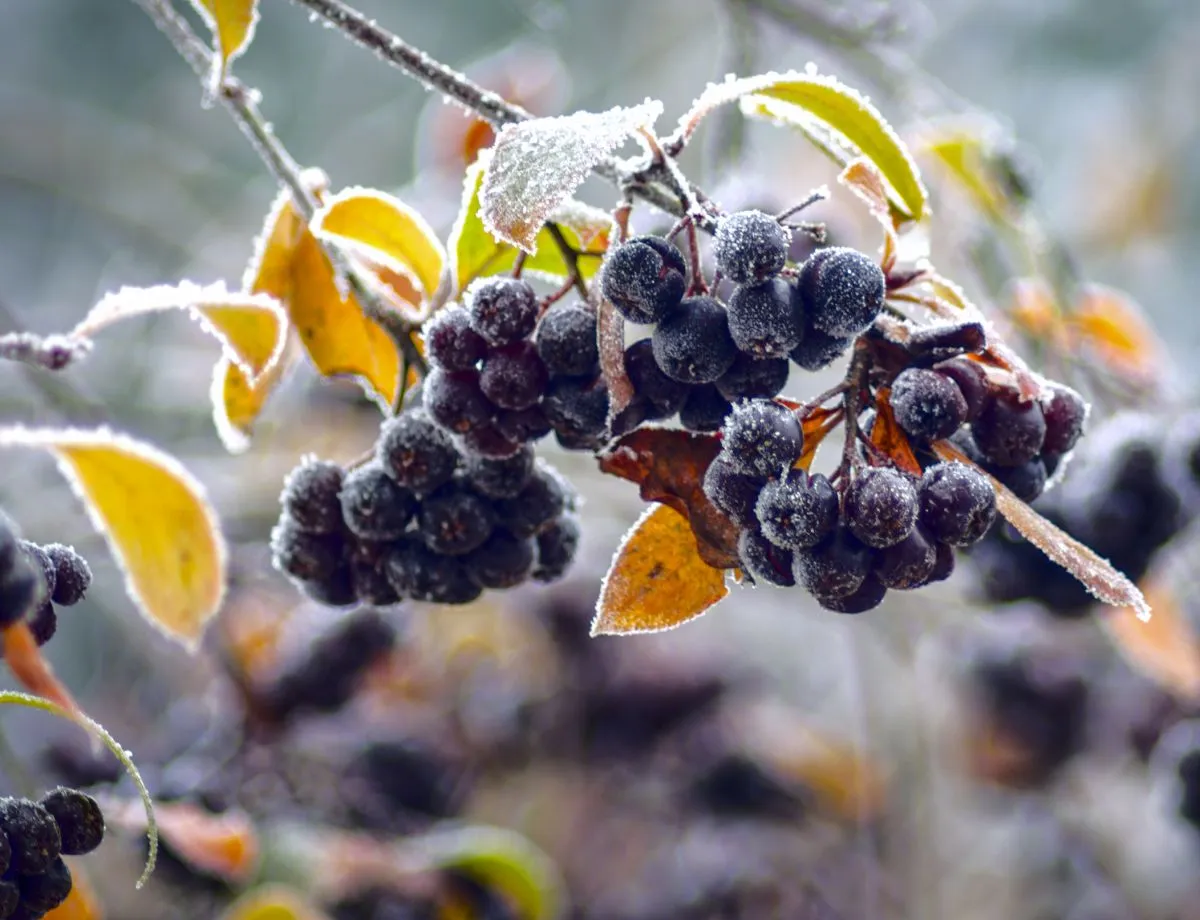🎁 Buy 6 Bottles, Get 6 FREE
What is Ice Wine?

Ice wine is a naturally sweet dessert wine crafted from grapes that have frozen while still on the vine before being harvested and pressed. This freezing intensifies the grape’s sugars and flavours, producing a rich, syrupy juice that becomes the foundation of the wine. During pressing, the frozen water remains behind, allowing only the concentrated juice to be extracted. The result is a specialty wine known for its labour-intensive production and vibrant notes of stone fruits such as peach and apricot.
Ice wine is a rare and special dessert wine known for its intense sweetness and unique production process. Often called “liquid gold,” it’s loved for its perfect mix of sweetness and acidity.
But what is ice wine, and what makes it so unique? In this guide, we’ll explain how it’s made, why it’s so special, and how to enjoy it like an expert.
What is Ice Wine?
Ice wine, or “Eiswein” in German, is a sweet dessert wine made from grapes that freeze naturally on the vine. This process concentrates the sugars, creating a wine that is both sweet and full of flavour. Unlike many dessert wines, ice wine isn’t fortified with extra alcohol—the sweetness comes entirely from the grapes and how it’s made.
Why is it special? Only places with the right cold climates can produce real ice wine. Each bottle requires a lot of care and effort, from growing the grapes to the final product in the cellar. Its unique mix of sweetness, complexity, and acidity creates a truly unforgettable taste.
Key Features of Ice Wine
- Sweetness: Ice wine is famous for its rich sweetness, balanced by vibrant acidity that prevents it from being cloying.
- Unique Production Method: Harvesting grapes frozen naturally by winter temperatures sets ice wine apart. This method involves meticulous timing and patience, often requiring hand-picking grapes in frigid conditions.
- Small Yields: Due to the labour-intensive process and low juice yield from frozen grapes, ice wine production is inherently limited, making it a prized (and pricey) luxury.
How is Ice Wine Made
The Process
Ice wine is made in a unique way that starts right in the vineyard. Unlike regular grapes, these grapes stay on the vine long after the usual harvest season. They wait for winter temperatures to drop to at least -8°C (17.6°F), which causes the water inside the grapes to freeze. This freezing process leaves behind rich sugars and flavours.
Harvesting happens early in the morning, when it’s still cold enough to keep the grapes frozen. Winemakers carefully pick the grapes by hand and press them right away. Only the sweet, concentrated juice is collected. This juice is then fermented slowly, often taking several months. The result is a special wine with a rich, bright, and complex flavour.
Unique Conditions
Producing ice wine requires very specific conditions. It can only be made in regions with cold enough winters to freeze the grapes naturally. Attempting to simulate these conditions artificially (for instance, by freezing grapes after picking) would disqualify the wine from official “ice wine” designation in most countries.

What is Ice Wine: Origin
Where it All Began
Ice wine originally comes from Germany, where it is called “Eiswein.” Its story began in the late 18th century when an unexpected frost hit vineyards in Franconia, freezing the grapes. Instead of discarding the frozen fruit, winemakers decided to press it anyway and were surprised to find it made a very sweet and tasty wine. This experiment started the tradition of making ice wine.
A Global Spread
Over the years, ice wine started being made in other cold regions around the world. Canada became one of the biggest producers, with Ontario’s Niagara region leading the way. Today, Canada is well-known for making some of the best ice wine. Other countries, like Austria, the United States (especially New York State), and parts of Eastern Europe, have also become popular for producing this sweet dessert wine. Moldova, with its rich winemaking history and ideal climate conditions, has emerged as a notable producer of high-quality ice wines.
Ice Wine Grapes
- Riesling: One of the traditional grapes for Eiswein, Riesling ice wines are known for their bright acidity and delicate floral notes, often balanced by stone fruit flavors.
- Vidal Blanc: Widely grown in Canada, Vidal Blanc offers robust tropical fruit flavours, making it an ideal grape for ice wine.
- Cabernet Franc: Unlike most white-dominant ice wines, Cabernet Franc ice wines are notable for their striking red hues and complex berry flavours.
- Cabernet Sauvignon: Although uncommon for ice wine production, Cabernet Sauvignon can produce a unique and bold ice wine with rich dark fruit flavours and hints of spice, offering a distinctive profile.
- Muscat: Known for its aromatic qualities, Muscat grapes make ice wines that are sweet and fragrant, with flavors of orange blossom, honey, and ripe apricots.
What is Ice Wine: Countries and Regions
- Germany: The birthplace of Eiswein remains a benchmark for traditional methods and high-quality production, particularly from the Mosel and Rheingau regions.
- Canada: Often regarded as the global leader in production, Ontario’s Niagara region offers prime conditions for exceptional ice wine.
- Austria: Known for producing elegant and refined ice wines, often from grapes like Gruner Veltliner and Riesling.
- United States: New York’s Finger Lakes and Washington State have become key regions for ice wine production.
- Moldova: Moldova’s cold winters and rich winemaking tradition provide favourable conditions for crafting high-quality ice wine with unique and complex flavour profiles.
Notable Producers
Some well-known ice wine producers include Inniskillin from Canada, Dr. Loosen from Germany, and Kracher winery in Austria. Each is famous for making high-quality ice wines that reflect the unique characteristics of their regions.
Inniskillin is particularly known for its vibrant and flavourful Vidal ice wines, while Dr. Loosen focuses on elegant and refined Riesling ice wines, showcasing Germany’s long winemaking traditions.
Kracher winery stands out for its rich and complex dessert wines, which perfectly balance sweetness and acidity.
Moldova, a lesser-known yet remarkable wine-producing country, is also making a name for itself in the world of ice wines. Wineries like Asconi are leveraging the country’s cold winters and diverse terroirs to craft ice wines that are both aromatic and well-balanced. Known for their strong fruit and honey flavours, these wines are a great example of the skill and tradition of Eastern European winemakers.

How to Enjoy Ice Wine
Pairing Suggestions
- Cheese: Pair with aged cheddar, blue cheese, or Brie for a delightful contrast of sweet and savory.
- Desserts: Complement the fruity and honeyed notes of ice wine with desserts like fruit tarts, cheesecake, or crème brûlée.
- Spicy Foods: Ice wine’s sweetness provides a perfect balance to spicy dishes, such as Thai or Indian cuisine.
Serving Tips
- Glassware: Opt for smaller dessert wine glasses or specialised ice wine glasses to concentrate the aromas.
- Temperature: Serve ice wine well-chilled, around 8–10°C (46–50°F), to highlight its refreshing acidity and sweetness.
Ice wine isn’t just a sweet drink—it’s a result of skill and dedication. Its unique flavours and careful production make it truly special.
Ready to explore and purchase ice wine? Discover our curated selection of ice wines here and find your perfect bottle. Cheers to your next sweet treat! 🍷
What is Ice Wine FAQ
Ice wine is unique because of the meticulous process required to produce it. Grapes are left to freeze naturally on the vine, harvested at just the right moment while frozen, and pressed while still icy. This concentrates the sugars and flavours, resulting in a sweet and flavorful wine with balanced acidity.


